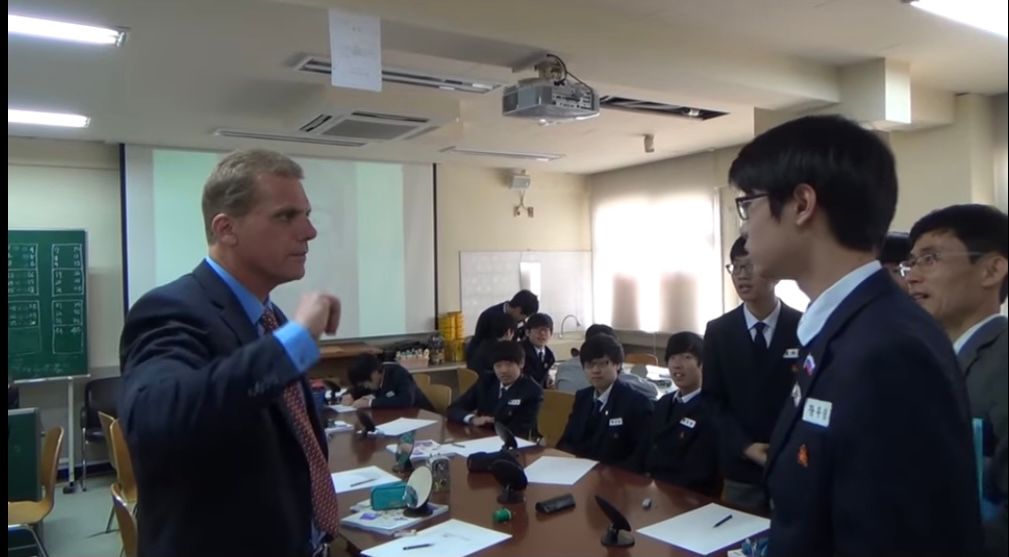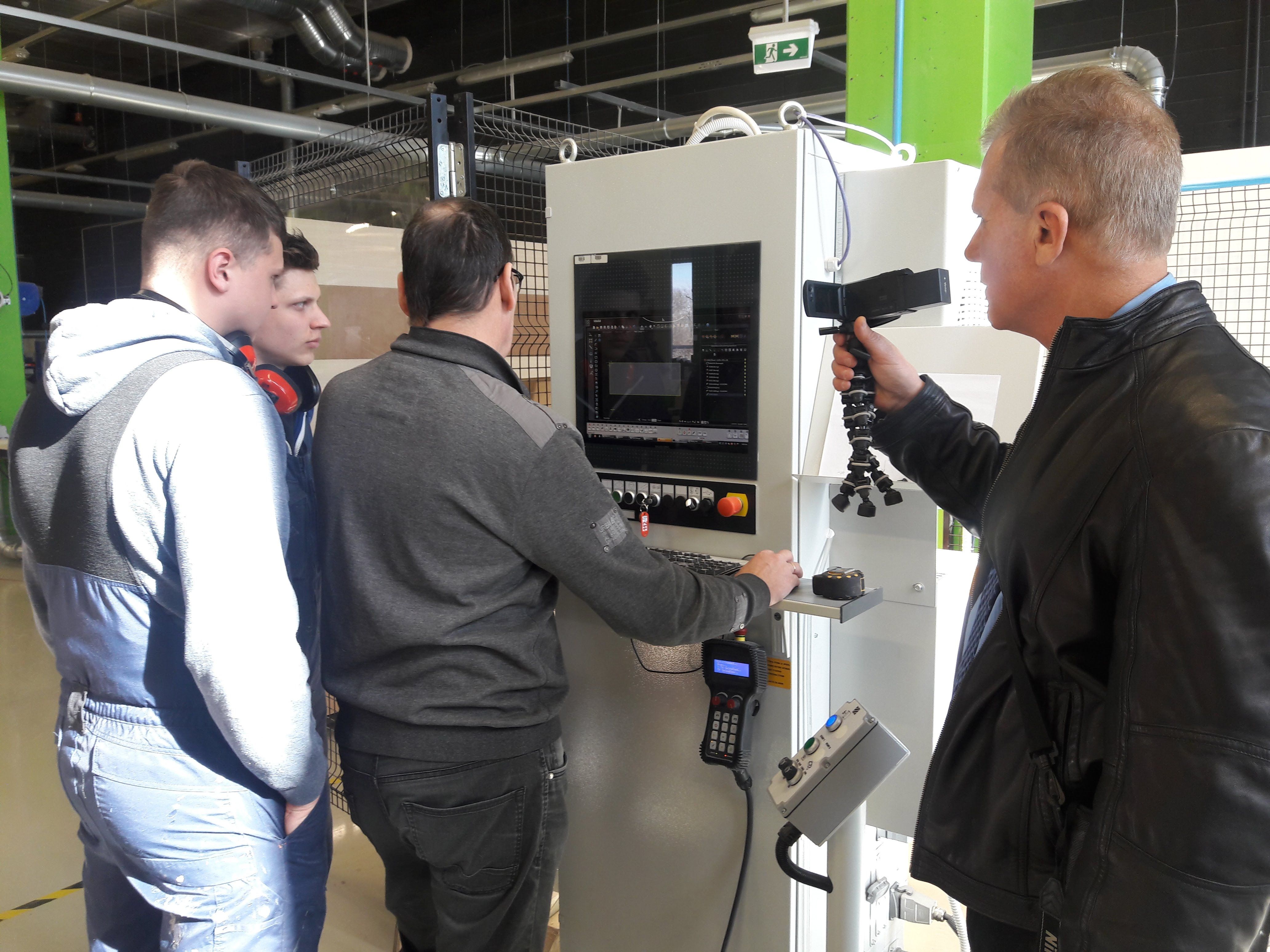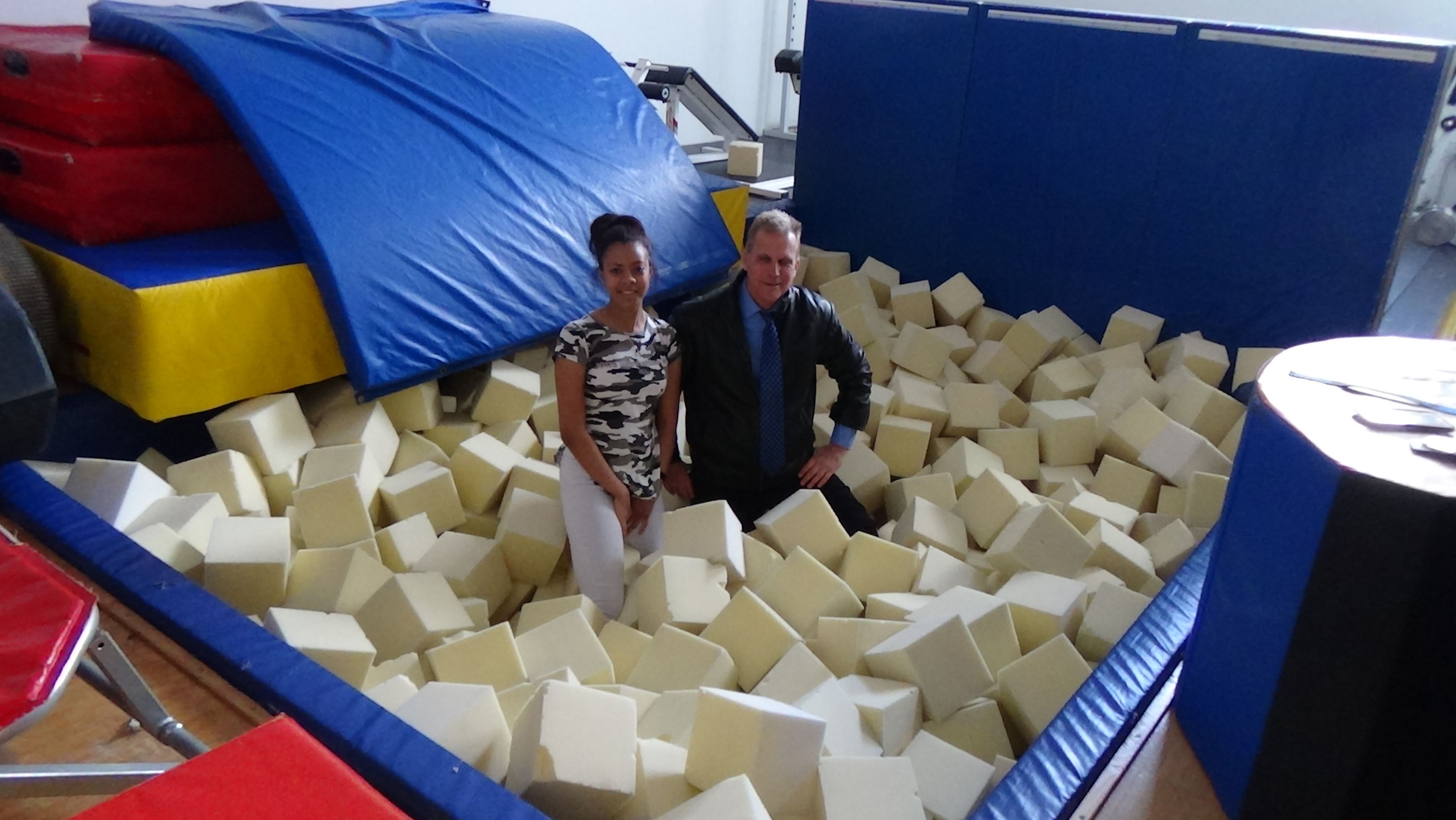
Keith Ballard with elementary schoolchildren in Ireland.
DURING SUMMER VACATION five years ago, veteran middle school music teacher Keith Ballard, a member of Sweetwater Education Association, found himself in the office of one of the top education officials in Estonia.
It wasn’t unusual for Estonia to welcome educators from around the world, since they have the highest-rated schools among Western countries. The administrator told Ballard that Chinese educators, in particular, frequently came on state-sponsored trips to get ideas for improving their education system, which already was ranked as No. 1 in the world.
Out of curiosity, Ballard asked the administrator how many of those visitors had been from the United States. The official didn’t have to rack his brain for an estimate. He’d seen precisely two American “educational tourists” in the past two decades — and that included Ballard.
Ballard is convinced that this one distinction helps explain why students in so many countries, from Japan to Canada, continue to outperform American students on the Program for International Student Assessment exam known as PISA.
“A key factor Ballard discovered is that countries with top education systems offer more support to both families and teachers than the United States.”
A random sample of 15-year-olds in more than 80 countries will take the PISA exam this fall. When the test was last given in 2018, nearly two dozen countries outperformed American students in reading and science while 35 beat our students in math. We’ve landed in about the same spot since the exam was first administered two decades ago. But while similar results in past years have prompted major educational reforms in countries such as Germany, the United States’ persistently middling status has triggered little more than passing headlines.
Ballard had to ask himself: If we can’t even acknowledge that we might have something to learn from other countries, let alone dedicate resources the way those countries do to help our teachers study what the best of the best are doing, how can our students be expected to compete in the new global economy? And what does that reality mean for their future — and the future of our nation?

Ballard’s book was published in June.

Ballard shoots video while observing instruction at an Estonian vocational education school. Here he talks to high school students in South Korea

Those questions drove Ballard, winner of the national Milken Educator Award in 2003, to become the first documented K-12 teacher to complete a self-funded study of schools in every country that regularly beats us on PISA exams. During summer breaks over the course of a decade, he visited more than 170 schools in nearly two dozen countries. Ballard talked his way into meetings with top education officials in Estonia, bathed in the icy Rhine River so he could visit schools in pricey Lichtenstein and ate in a school cafeteria in Singapore. He even toured classrooms in enigmatic North Korea, filming hundreds of hours of YouTube videos along the way.
Calling Ballard a “pioneer,” Marc Tucker, founder of the National Center on Education and the Economy, said he’s “the first schoolteacher I have met in the United States who has taken it upon him or herself in a serious way to understand what these educationally superior countries are doing and to accept that they might actually have something to teach us.”
In some ways, Ballard discovered, schools in these countries couldn’t be more different. But by blending hard data and firsthand accounts from inside successful school systems, he identified eight areas where countries with top education systems share common ground.
Now Ballard is on a mission to share those solutions. He’s done dozens of TV interviews and delivered a TEDx Talk this spring. This summer, he published a book (with help from me, a writer who’s also a former English teacher) that’s titled “Stealing from the World’s Best Schools: What One U.S. Teacher Learned by Visiting Countries that are Doing Public Education Right.”
A key factor Ballard discovered is that countries with top education systems offer more support to both families and teachers than the United States. When parents have a child in Singapore, for example, the government deposits $3,000 into an account that can be used to cover costs such as early education and healthcare. As for teachers, they’re paid starting salaries on par with new engineers in most countries that outrank us on PISA exams. Teachers also have up to two-thirds of their paid time each day set aside for collaboration and professional development, including to visit top schools in other countries.
In return for those investments, these countries can maintain higher expectations for both parents and teachers. Solid support systems help ensure parents have capacity to better support their child’s education by showing up to a teacher’s open house and helping with homework. At the same time, better pay and training for teachers generates more respect for the profession, which also eases issues with recruitment and retention. Consider that it’s not uncommon in Canadian cities for 10 qualified educators to apply for each open teaching position. And while places like Arizona are so desperate for teachers that they’re dropping requirements for a bachelor’s degree, most top-tier countries require all teachers to have master’s degrees in the subjects they teach.
What don’t such countries do? Ballard found they don’t spend nearly as much time on standardized testing. They don’t use as much technology in elementary classrooms. They don’t assume every kid will go to college, with a wide range of vocational programs that will prepare students to work in their chosen field right out of school. They don’t cut arts programs, with school funding decoupled from property taxes. That leads to more equity and less dramatic swings in budgets. And they don’t demonize teachers’ unions or public schools with limited options to siphon support away from traditional education.
Implementing these practices in the U.S. would require sweeping change, which may feel out of reach. But our book also offers practical steps everyone can take to nudge our schools in the right direction. Lots of small steps can become a stampede that will reverberate in the halls of our state house and in Washington, D.C. And that, Ballard says, can lead to real transformation.
“We owe it to our kids, and our country, to try.”

Ballard in the PE room of a middle school in Finland.
What Top Performers Have in Common
BY BLENDING hard data and firsthand accounts from inside successful school systems, Keith Ballard identified eight areas where countries with top education systems share common ground. He neatly organized his book into eight chapters that cover these areas:
1. Family Support. It’s a two-way street. These countries offer support for new parents and families and opportunities for early childhood education. Supported parents give back in terms of their involvement in their children’s education, communication with teachers and schools, etc.
2. High Standards for Teachers. The profession is prestigious; schools and education systems invest in recruiting, training and retaining highly qualified teachers, supporting them at every stage of their careers.
3. Restructuring the School Experience. Students have a longer school year, starting the day a bit later, and receiving frequent breaks for exercise, recreation and rest. Homework is regular but limited. Campuses are clean and inviting, with classrooms streamlined to focus on learning.
4. Vocational Education Puts Student Choice First.
Students are able to choose their path to professions and careers at an early age. Vocational program choices abound, with businesses and industries involved and training that often leads directly to well-paying jobs.
5. High-Stakes Testing With Different Stakes. The number of standardized tests is limited. Tests more often are used to gauge student growth and progress.
6. Technology Is Secondary. Many school systems have educators focus on “the basics” and are slower to adopt new technologies. But when they do, teachers receive training and support.
7. The Arts and Culture Are Essential. In many countries, arts education is mandatory, often taught by in-house professionals.
8. The Equity Question. Addressing the seven topics above would go a long way toward improving the fairness of American schools. But many countries with top education systems fund all schools equally, strive to give the same education to all students, and generally do not offer educational alternatives such as private schools, charter schools and homeschooling.
See video from Ballard’s visits to top schools in multiple countries at his YouTube channel Educator Keith Ballard.
The Discussion 0 comments Post a Comment